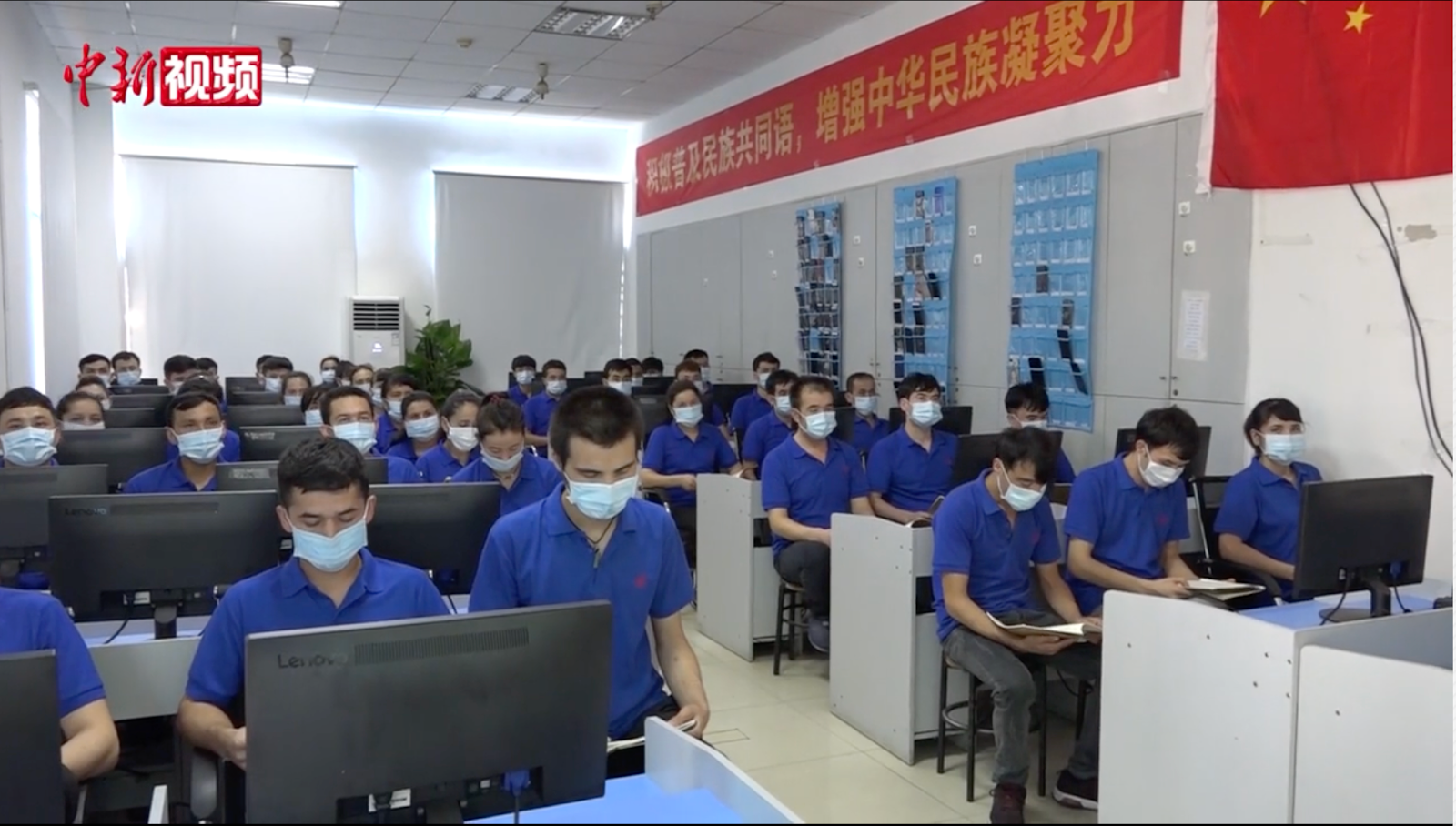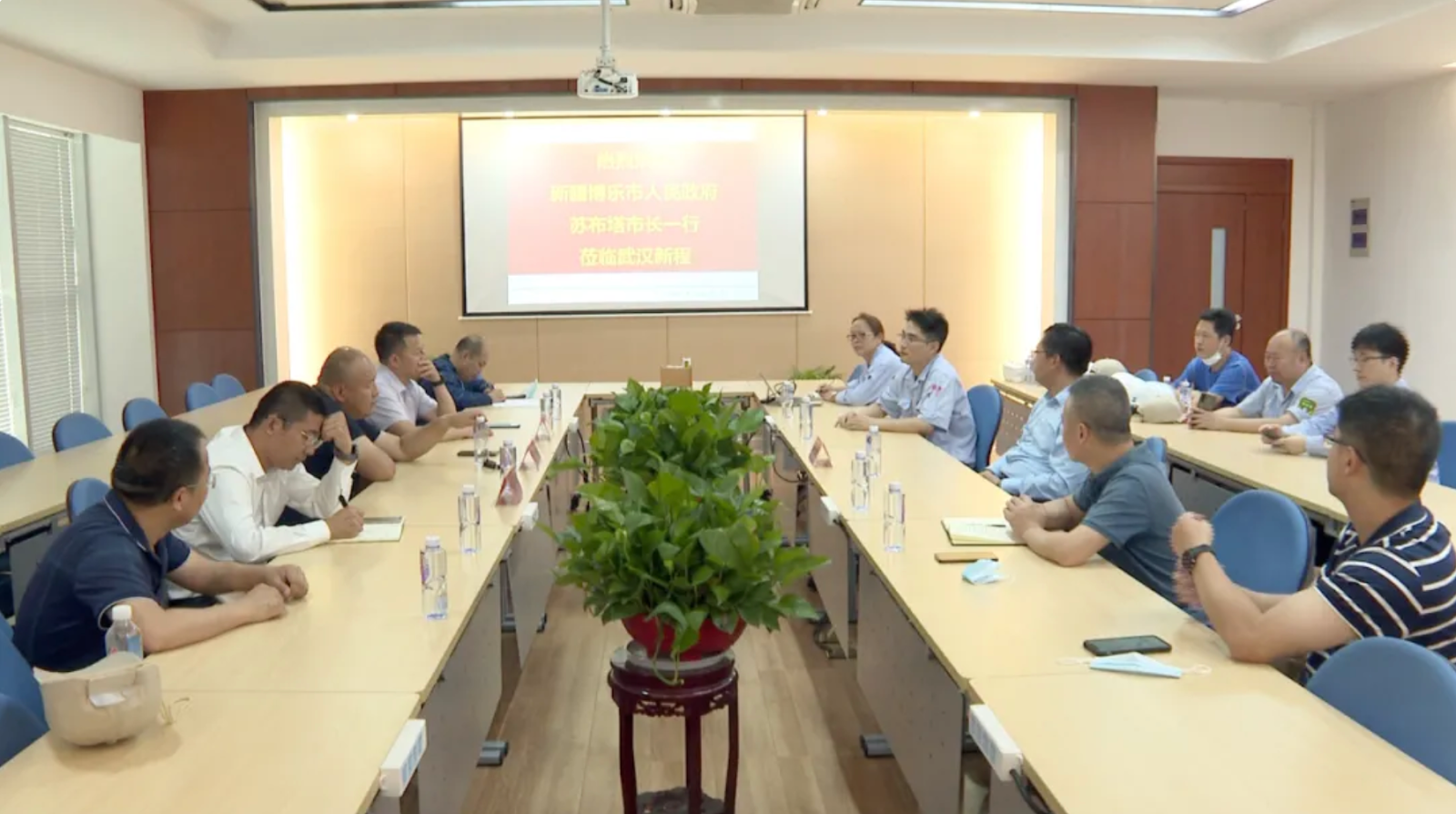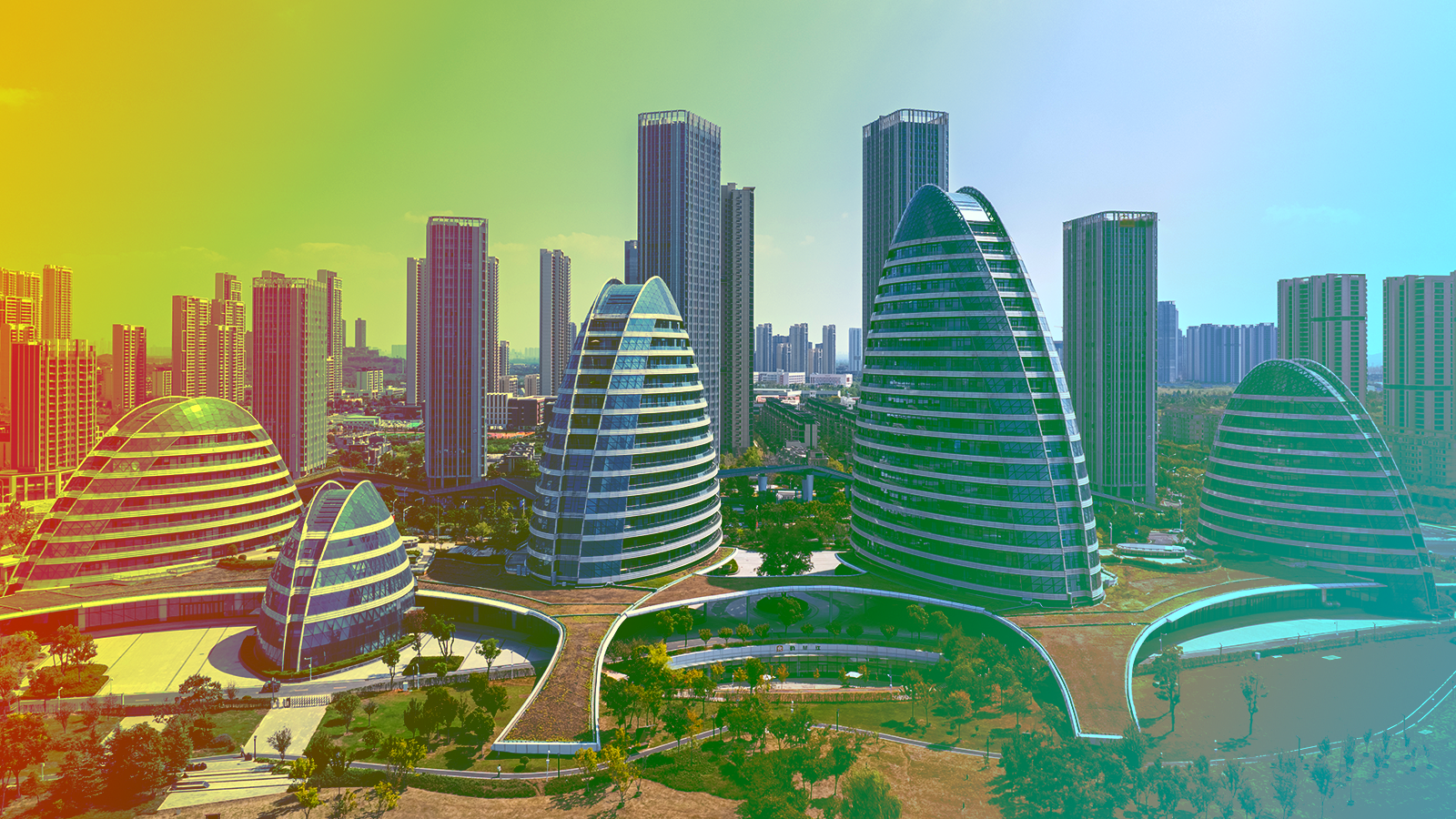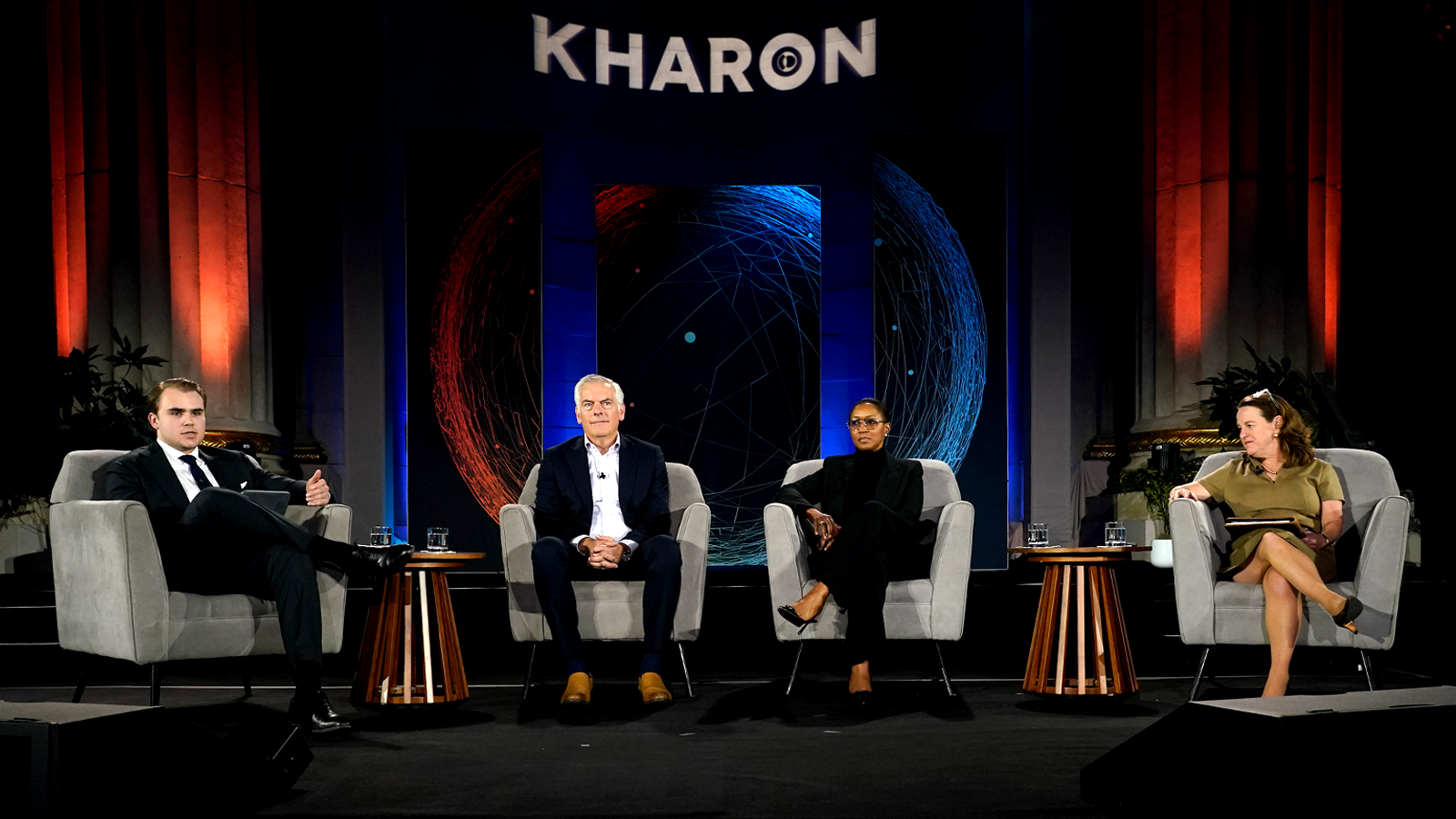Wuhan’s Economic and Technological Development Zone (ETDZ), known as “China’s Car Valley,” is a major industrial area that hosts more than 1,200 suppliers, including firms linked to multinational automotive brands. Officials there aim to produce 1.5 million vehicles annually as of this year, with ambitions to turn the 500-square-kilometer zone into the “World’s Car Valley.”
But the same zone has also been linked to state-sponsored labor transfer programs from Xinjiang, funneling Uyghur workers into factories 2,000 miles from home. Government records and reports of official visits reviewed by Kharon indicate that such programs have relocated Uyghur workers to companies within the industrial zone.
That means companies sourcing from the Wuhan zone may face risks under the Uyghur Forced Labor Prevention Act (UFLPA). And Car Valley’s position within the global supply chain suggests broader compliance and enforcement challenges.
The Wuhan zone is one of China’s 229 central-government-run zones that carry out Beijing strategic priorities while attracting foreign investment. Concentrated largely in China’s wealthier eastern provinces, these zones have become central to the country's development agenda.
But the same zone has also been linked to state-sponsored labor transfer programs from Xinjiang, funneling Uyghur workers into factories 2,000 miles from home. Government records and reports of official visits reviewed by Kharon indicate that such programs have relocated Uyghur workers to companies within the industrial zone.
That means companies sourcing from the Wuhan zone may face risks under the Uyghur Forced Labor Prevention Act (UFLPA). And Car Valley’s position within the global supply chain suggests broader compliance and enforcement challenges.
The Wuhan zone is one of China’s 229 central-government-run zones that carry out Beijing strategic priorities while attracting foreign investment. Concentrated largely in China’s wealthier eastern provinces, these zones have become central to the country's development agenda.
RISK FACTORS
“Pairing assistance” partnership with Xinjiang: China’s Ministry of Commerce reported in January that 182 such industrial zones had joined “pairing assistance” programs since 2023, partnering with underdeveloped border regions such as Xinjiang to promote more balanced growth.
“Pairing assistance” partnership with Xinjiang: China’s Ministry of Commerce reported in January that 182 such industrial zones had joined “pairing assistance” programs since 2023, partnering with underdeveloped border regions such as Xinjiang to promote more balanced growth.
- The Chinese government touts the initiatives as efforts to reduce poverty and spur regional development, in part by relocating ethnic minority workers—mostly Uyghurs—from Xinjiang to factories elsewhere in China.
- The U.S. Department of Homeland Security says that, under the guise of economic aid, “pairing assistance” and “poverty alleviation” programs are associated with forced labor risks.

In a 2020 report by Chinese state media, uniformed Uyghur workers in Wuhan attend training sessions beneath a banner that reads: “Actively promote the national common language to strengthen the cohesion of the Chinese nation.”
Since then, Car Valley has served as a destination for transferred labor. An official zone document from 2021 identified 15 companies in Car Valley employing nearly 1,700 Xinjiang workers. In 2022, according to the Bureau of Investigative Journalism (TBIJ), Chinese state media reported that the zone “welcomed” more than 1,500 additional workers from Xinjiang.
The Wuhan zone in 2020 notably promoted a “Xinjiang Aid Jinguo (Women) Project,” which officials described as providing “skills training” and fostering “patriotic and Party-loving feelings.”
Xinjiang state-owned recruiting company: In 2023 social media posts, Xinjiang Zhengcheng Minli Modern Enterprise Service Co., a state-owned recruitment firm in Xinjiang, said it facilitates labor recruitment for companies operating in Car Valley. Among its clients, it said, are Wuhan Honghai Technology Co. and Fujie (Wuhan) Electronics Accessory Co., both auto industry suppliers.
CASE STUDY
Jiangsu Xincheng (Wuhan) Auto Parts Co., Ltd. is a subsidiary of Xincheng Automobile Industry Co. that is based at Car Valley. Xincheng Auto Parts supplies and runs joint ventures involving major American, European, Japanese and Chinese automakers—but it also signals possible UFLPA risks that reinforce those of the broader zone.
Xinjiang officials have shown particular interest in Xincheng Auto Parts. A June 2021 press release from the Wuhan zone said that, during a visit there, the mayor of Bole toured the company’s factory, where he discussed opportunities for “cooperative development” and called for strengthening the “pairing” between Bole and the Wuhan ETDZ.
- In one instance in 2021, Hubei Kait Auto Electronic, based in the Wuhan zone, gave awards to seven selected workers from Bole, Xinjiang. The company highlighted the workers as its “production and quality pacesetters.”
The Wuhan zone in 2020 notably promoted a “Xinjiang Aid Jinguo (Women) Project,” which officials described as providing “skills training” and fostering “patriotic and Party-loving feelings.”
Xinjiang state-owned recruiting company: In 2023 social media posts, Xinjiang Zhengcheng Minli Modern Enterprise Service Co., a state-owned recruitment firm in Xinjiang, said it facilitates labor recruitment for companies operating in Car Valley. Among its clients, it said, are Wuhan Honghai Technology Co. and Fujie (Wuhan) Electronics Accessory Co., both auto industry suppliers.
CASE STUDY
Jiangsu Xincheng (Wuhan) Auto Parts Co., Ltd. is a subsidiary of Xincheng Automobile Industry Co. that is based at Car Valley. Xincheng Auto Parts supplies and runs joint ventures involving major American, European, Japanese and Chinese automakers—but it also signals possible UFLPA risks that reinforce those of the broader zone.
Xinjiang officials have shown particular interest in Xincheng Auto Parts. A June 2021 press release from the Wuhan zone said that, during a visit there, the mayor of Bole toured the company’s factory, where he discussed opportunities for “cooperative development” and called for strengthening the “pairing” between Bole and the Wuhan ETDZ.

The mayor of Bole City, Xinjiang, makes a visit Jiangsu Xincheng (Wuhan) Auto Parts Co. in June 2021. (Wuhan ETDZ)
A May report by TBIJ added to the picture. Uyghur workers, TBIJ said, had been placed at the Xincheng Auto Parts facility after being recruited through Xinjiang-government-run social media platforms. In one online video that TBIJ cited from December 2023, a worker wearing a “Xincheng Auto Parts” cap is shown inside the Wuhan zone. The video included a Uyghur proverb: “If I say that I’m exhausted, I’m breaking the taboo. If I say I’m not exhausted, I’m lying.”
THE BOTTOM LINE
Car Valley speaks to a well-established risk model: the concentration of transferred labor in Chinese industrial parks far from Xinjiang.
To identify risks, global automakers that source from the Wuhan zone—and there are many of them—should be aware of and on the lookout for possible UFLPA red flags.
More on forced labor from the Kharon Brief:
THE BOTTOM LINE
Car Valley speaks to a well-established risk model: the concentration of transferred labor in Chinese industrial parks far from Xinjiang.
To identify risks, global automakers that source from the Wuhan zone—and there are many of them—should be aware of and on the lookout for possible UFLPA red flags.
More on forced labor from the Kharon Brief:







